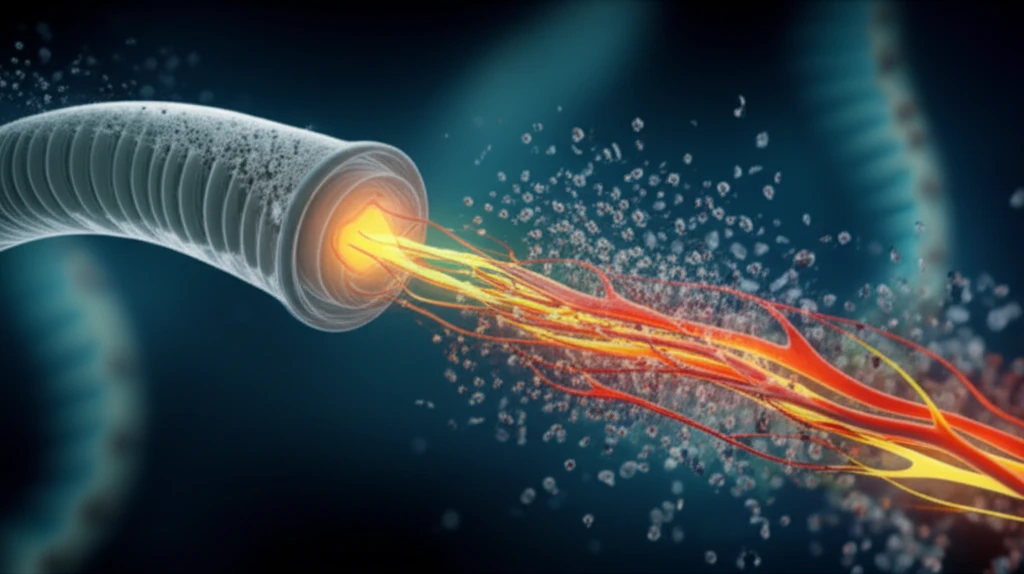
Spinal Cord Breakthrough: Can FGF1 and Nerve Grafts Restore Movement?
"New research explores how a biodegradable device delivering FGF1 and nerve grafts could revolutionize spinal cord injury treatment and motor function recovery."
Spinal cord injury (SCI) presents a formidable challenge in the field of neuroscience. While numerous strategies have emerged in recent years, aimed at repairing the central nervous system (CNS), the quest for effective treatments continues. The focus often lies in optimizing post-injury conditions, mitigating secondary damage, and fostering regeneration across the injury site to create a more favorable environment.
Recent breakthroughs have sparked renewed hope, particularly for individuals with chronic SCI. Epidural stimulation of the caudal spinal cord, combined with locomotor training, has shown promise in enabling voluntary movements of the lower extremities. This approach is believed to activate previously dormant axons that traverse the lesion. There is a theory in the scientific community, that even in cases of complete SCI, a regeneration strategy combined with locomotor training and epidural stimulation could potentially restore movement in the lower extremities.
Peripheral nerve grafts (PNGs) present a potential avenue for regaining function in injured spinal cords. Some approaches combine PNGs with acidic fibroblast growth factor (FGF1), employing a strategy of rerouting regenerating fibers from white matter into adjacent gray matter. Studies suggest that longitudinal tracts tend to favor growth into gray matter, irrespective of guidance cues. Precise placement of PNGs is crucial for achieving optimal axonal growth.
PNGs and FGF1: A Cutting-Edge Strategy for Spinal Cord Repair?

Researchers explored the use of a biodegradable device containing PNGs, with and without FGF1, to repair spinal cord injuries. This new device is made of calcium sulphate, designed to biodegrade, and slowly release FGF1. The study aimed to determine if the new device containing autologous PNGs could trigger a motor cortex-derived electrophysiological response in the hind limb (MEP), and whether the addition of FGF1 would enhance this response, with motor cortex derived hind limb response paralleled by motor cortex neuron regeneration across the injury zone.
- BBB score (Basso, Beattie, and Bresnahan locomotor rating scale) to assess motor function.
- Electrophysiology to measure motor evoked potentials (MEPs).
- Immunohistochemistry, including anterograde BDA tracing, to analyze nerve fiber regeneration.
Looking Ahead: The Future of Spinal Cord Injury Treatment
These findings offer valuable insights into potential therapeutic strategies for spinal cord injuries. The combination of PNGs and FGF1, facilitated by a biodegradable device, represents a promising approach to promote nerve regeneration and restore motor function. While further research is needed, this study provides a strong foundation for future translational studies and potential clinical applications.
